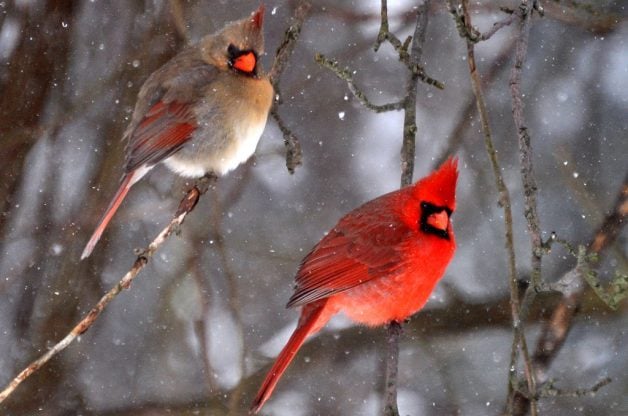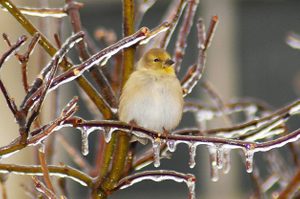True Colors: Decoding Bird Plumage
Updated: Dec. 07, 2022

Brilliantly colored bird feathers serve many purposes. Learn how bird plumage protects and helps wild birds.
The striking colors of birds aren’t just for our viewing pleasure. Every hue, stripe and spot serves a vital purpose. There two main reasons for their colorful bird feathers and markings. First, birds use their colors to attract mates and intimidate competition. And second, they use them to provide protection from predators.
When we look at birds, the colors we see aren’t always what they seem. Bird plumage colors are a result of either pigment or from the light reflecting off feathers. For example, bluebirds, indigo buntings and blue jays are not really blue. The color we see is the light reflecting off their brown feathers. Fortunately for the birds, some predators do not see the same bright-blue reflections as we do. So they remain protected. This is the same reason why a bluebird in heavy shade will not look blue.
When it comes to courtship, we know that it is the females of most species that select their mates, so the color and intensity of the male’s plumage can influence a female’s choice. Think about the northern cardinal. The male catches the eye of the female with his brilliant red color. She selects him as a mate, and her subtler tan and reddish coloring camouflages her when she’s nesting. Why, then, is the male not conspicuous to such predators as the sharp-shinned and Cooper’s hawks? Some scientists believe that hawks don’t see some red hues as well as female cardinals do. So the male’s flashy feathers may not stand out to hawks, but they still attract a mate.

Less colorful birds, such as sparrows, woodcocks, whip-poor-wills and sandpipers, are marked to blend in with their habitat. Their streaks, stripes, bars, spots and lines look so much like their surroundings that they are almost impossible for us to see. If you ever find the nest of a killdeer, meadowlark or mallard duck, you will know what I mean. They blend into their backgrounds perfectly. I remember flushing a whip-poor-will from her nest on a forest floor covered with dead leaves. Two days later, I returned to the site to photograph the bird on her nest, but I could not find her. It wasn’t until I stared directly at the bird for several minutes that her black eye popped out at me. I was shocked by how well it was camouflaged.
The brilliant colors some birds display during the nesting season tend to be muted when they molt into their fall and winter plumages. The bright yellow of a male American goldfinch, for example, becomes an olive-brown from late summer until the following spring. In fact, the goldfinches look so different in winter that many people believe they are a different species.
Bird plumage colors are definitely a science. Some might be brighter than others, but they all relate to their survival.
